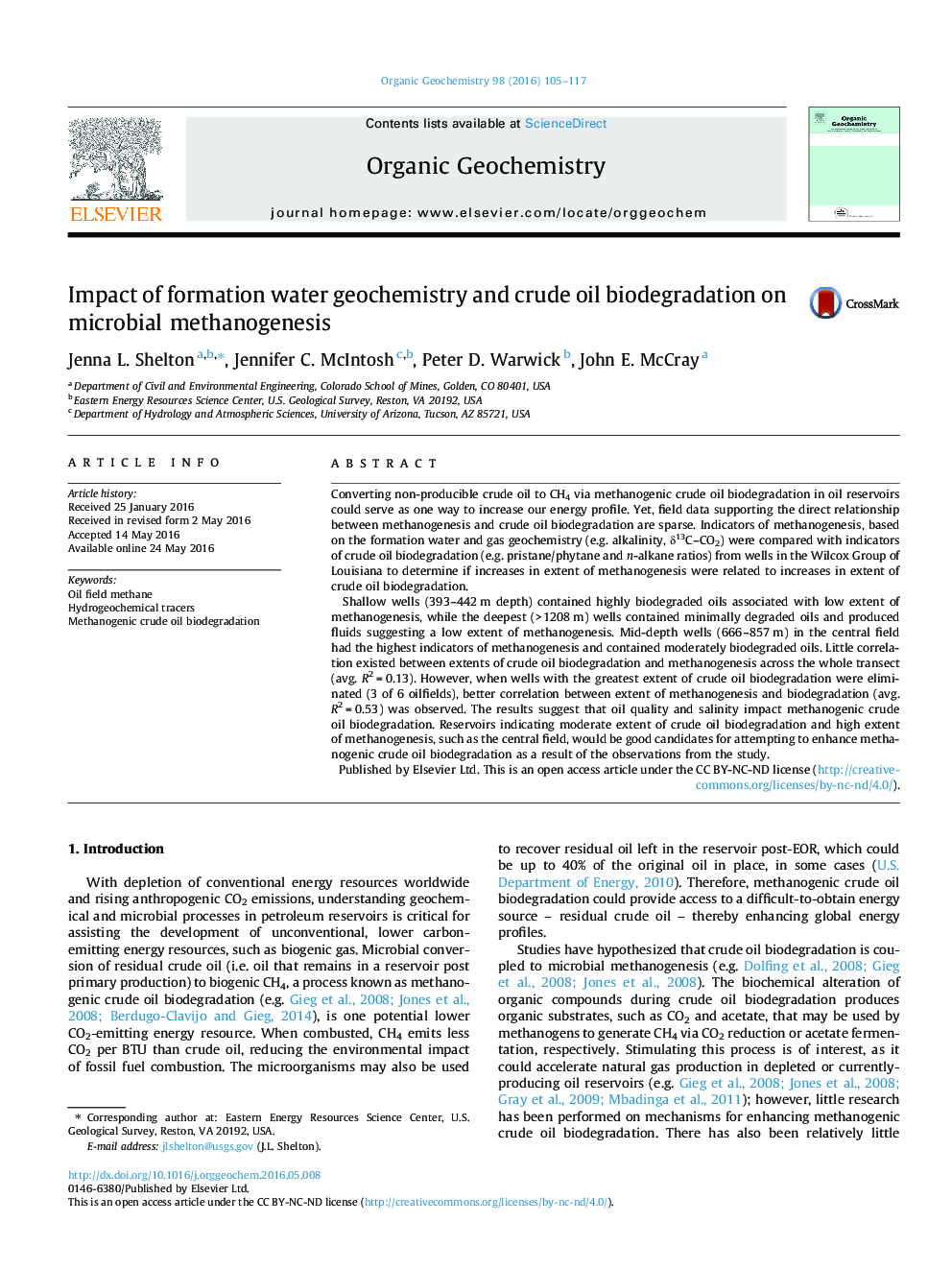| Article ID | Journal | Published Year | Pages | File Type |
|---|---|---|---|---|
| 5162207 | Organic Geochemistry | 2016 | 13 Pages |
Abstract
Shallow wells (393-442Â m depth) contained highly biodegraded oils associated with low extent of methanogenesis, while the deepest (>Â 1208Â m) wells contained minimally degraded oils and produced fluids suggesting a low extent of methanogenesis. Mid-depth wells (666-857Â m) in the central field had the highest indicators of methanogenesis and contained moderately biodegraded oils. Little correlation existed between extents of crude oil biodegradation and methanogenesis across the whole transect (avg. R2Â =Â 0.13). However, when wells with the greatest extent of crude oil biodegradation were eliminated (3 of 6 oilfields), better correlation between extent of methanogenesis and biodegradation (avg. R2Â =Â 0.53) was observed. The results suggest that oil quality and salinity impact methanogenic crude oil biodegradation. Reservoirs indicating moderate extent of crude oil biodegradation and high extent of methanogenesis, such as the central field, would be good candidates for attempting to enhance methanogenic crude oil biodegradation as a result of the observations from the study.
Related Topics
Physical Sciences and Engineering
Chemistry
Organic Chemistry
Authors
Jenna L. Shelton, Jennifer C. McIntosh, Peter D. Warwick, John E. McCray,
